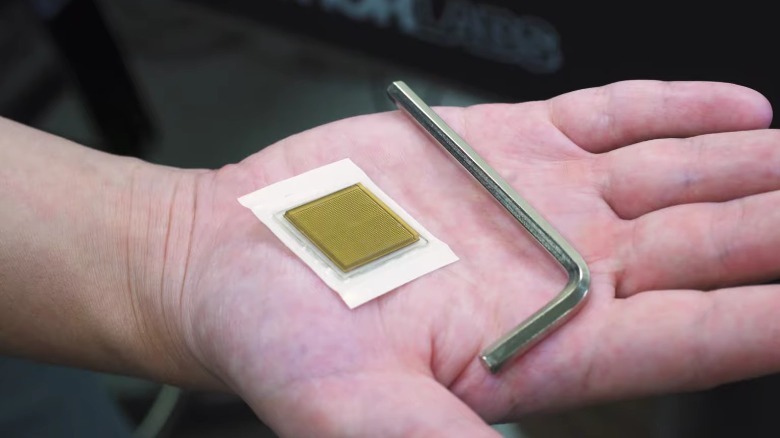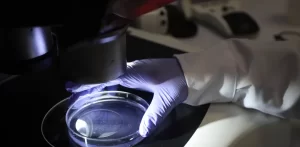
This Skin-Sticking Ultrasound Patch Is Like A Tricorder Band-Aid
In the field of medical science, ultrasound is a method that is widely used to send sound waves through the body to produce images of organs and internal tissue. Generally requires the use of large and expensive engine and expert supervision. An engineer team at MIT has created a leather patch the size of a stamp that will do jobs that are demanding easily, giving a clear view to internal organs such as the lungs and heart in real-time.
Patch is a rigid Piezoelectric probe array attached to the skin through transparent gel material. Once installed, this can give a continuous view to the vital innards of the human body for about 48 hours. A doctor or technician can easily apply this patch to the body parts that need to be scanned.
After the patch has been applied to the right place, it is connected to the machine that records the ultrasound signal and converts it into a visible image. Details In a paper published in science, patches are extraordinary non-invasive techniques for imaging parts and organs that can revolutionize this sector very well.
During the test phase, ultrasound patches are able to drain the view directly from the abdomen, heart, and lungs of the patient. The elastomer adhesive hydrogel used in testing is (and) strong enough so that someone can use patches when involved in activities such as running, riding a bicycle, or lifting weights. The main advantage of ultrasound stickers is that it will not require continuous supervision by technicians, humans or robots.
The next breakthrough in medical imaging
At present the team is working on a patch wireless iteration so that it can be worn anywhere and is available to be purchased on the table, like the bands at the pharmacy. The idea is to link a patched with a smartphone and use the AI algorithm to scan when needed.
“With a number of patches on your body, you can see your internal organs,” recorded Xuanhe Zhao, a professor of Mechanical Engineering and Civil Engineering and the Environment in MIT. Another main achievement is that the ultrasound patch made by the team produces a high resolution image, while previous efforts by experts can only manage low resolution visuals from internal organs.
Ultrasound stickers – which are about three millimeters thick and two square millimeters – one day can also help detect tumors and track fetal development in a mother’s womb. This is only the latest in the impressive line of medical discovery that has been delivered by MIT for the past few years. In February 2021, the MIT team also made a surgical tape to cover tears and wounds on internal organs, and one day could replace stitches that were sewn by hand.
Last year, another team from MIT developed a leather patch that was implanted with a sensor that was said to be able to monitor skin conditions and even cancer. In 2019, experts at MIT also detailed dyes made from nanocrystals who could store medical information under the skin, while still not visible to the naked eye.



Average Rating